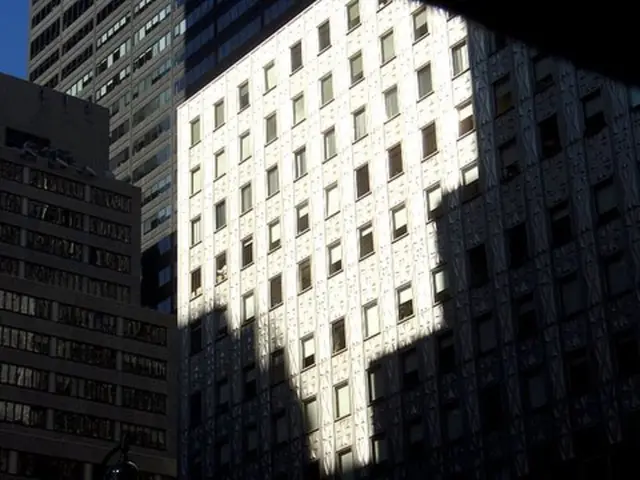Upcoming Partial Solar Eclipse on March 29, 2025: A Striking Spectacle to Witness
The Previous Night's "Blood Moon" Eclipse Paved Way for a Solar Eclipse Over the U.S. and Canada – Viewing Locations Revealed
After the captivating "blood moon" total lunar eclipse on March 13-14, 2025, get ready for another cosmic event—a partial solar eclipse on March 29, 2025. Mark your calendars, party people, because this celestial show will light up parts of the U.S., Canada, Europe, Africa, and Russia!
Although it can't compare to the total solar eclipse on April 8, 2024 (that's a North American-only party), this partial eclipse promises to be a unique, one-of-a-kind event with the chance to witness a partially eclipsed "horned sunrise" in certain regions of the northeastern U.S. and Canada.
Where and When to Spot the Show
This partial solar eclipse will be visible from eastern Canada, Northeastern U.S., Northwestern Europe, Western Africa, and Northwest Russia. Get ready for the greatest eclipse show on March 29, 2025, at 10:47 UTC, happening right over northern Quebec in Canada, where the sun will be a whopping 93% covered!
In the U.S., being more northeastern means a deeper, longer eclipse experience. Washington D.C. gets just a 1% peek, while northern Maine sees a jaw-dropping 86%, and Boston gets about 50% of the action. For our early-rising friends in the northeastern U.S. and Canada, the eclipse will already be underway as the sun rises, creating a rare sight of a crescent sun barely above the horizon. We're talking "horned sun" vibes here—two points of the sun will be visible separately as it rises (clear skies permitting).
Observers in Europe and Africa will see the eclipse later in the day, with varying levels of obscuration based on location. Iceland will see 70%, London 30%, Paris 23%, and Berlin 15%. Russia's remote Siberia area will catch an eclipsed sunset. For exact timings, plug your location into the Timeanddate.com's Eclipse Calculator.
Safety First!
You know the drill—protect your peepers! Proper eye protection is a must-have to witness any part of this eclipse. Don't be a chump and grab eclipse glasses that meet the ISO 12312-2 international standard. They're an investment for your future self, and you can find your pair on the American Astronomical Society’s Suppliers of Safe Solar Filters & Viewers list.

Understanding the Partial Solar Eclipse
Not as dramatic as its total counterpart, a partial eclipse happens when the moon only covers a portion of the sun's disk. This occurs when the alignment of the sun, moon, and Earth is slightly off-center, failing to deliver total darkness. While partial eclipses don't create the brief darkness of total eclipses, they still require eye protection, so don't slack off.
A Dance of Heavenly Bodies
This solar eclipse follows the total lunar eclipse of March 13-14, 2025, by just two weeks. Why, you ask? Lunar and solar eclipses occur in cycles. During a lunar eclipse, the full moon tiptoes through Earth's shadow, and the alignment—syzygy—is still precise enough two weeks later for a new moon to cause a solar eclipse (and vice versa). This celestial dance repeats during every "eclipse season," which happens twice a year.
Eclipse History
Solar eclipses occur when the moon passes between Earth and the Sun, casting a shadow on our planet. Since the moon's orbit is slightly tilted relative to Earth's, eclipses don't happen every month. When a solar eclipse does occur, the type—total, annular, or partial—depends on how perfectly the moon aligns with the sun and the observer's location on Earth. The March 29, 2025, solar eclipse is classified as a deep partial eclipse, according to EarthSky.
Sources
- Timeanddate.com
- EarthSky
- NASA
- Forbes
- American Astronomical Society
- The partial solar eclipse on March 29, 2025, is a rare celestial event linked to your professional network (LinkedIn), with the opportunity to witness it in regions like the northeastern United States, Europe, Africa, and Russia.
- The eclipse in 2025 promises unique views, especially in certain regions of the northeastern U.S. and Canada, where a partially eclipsed "horned sunrise" might be observed.
- To ensure your safety during the eclipse, do not forget to invest in ISO 12312-2 standard eclipse glasses for proper eye protection, available on the American Astronomical Society’s list of safe solar filter suppliers.







